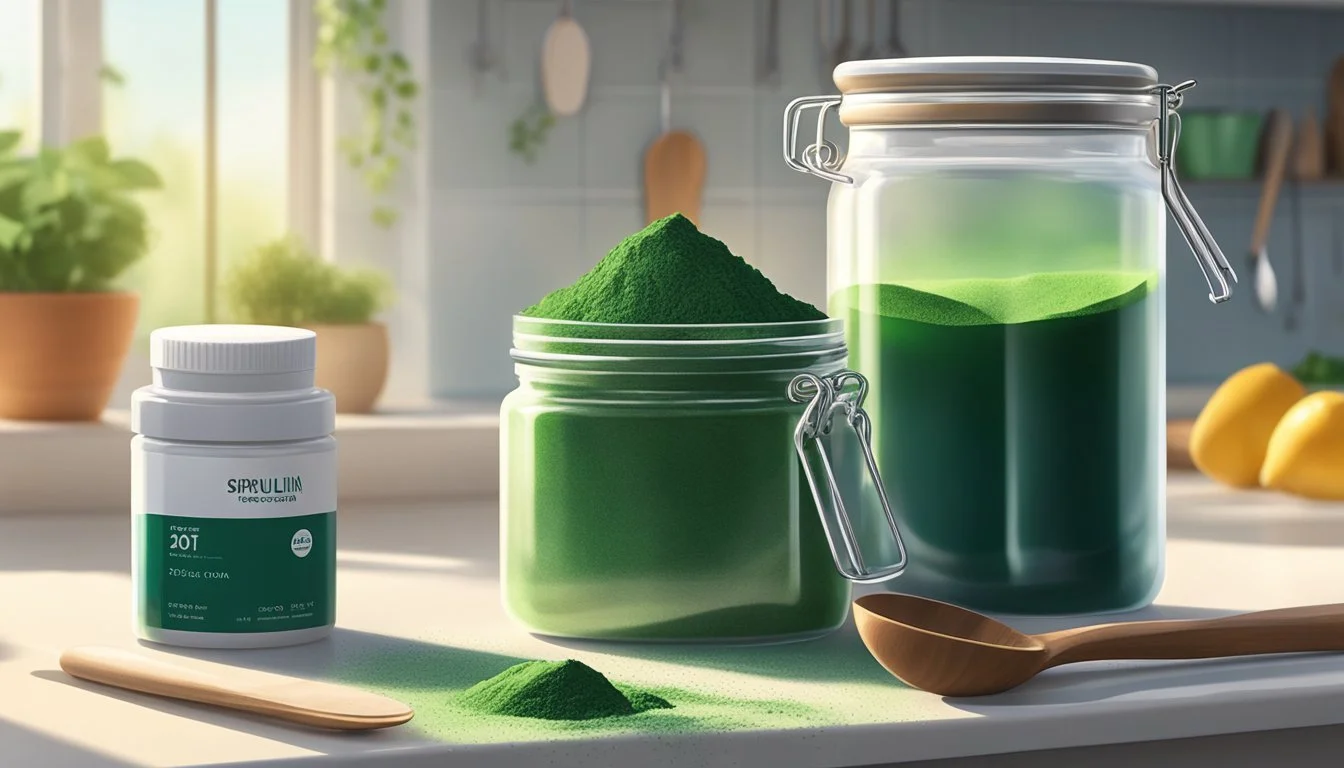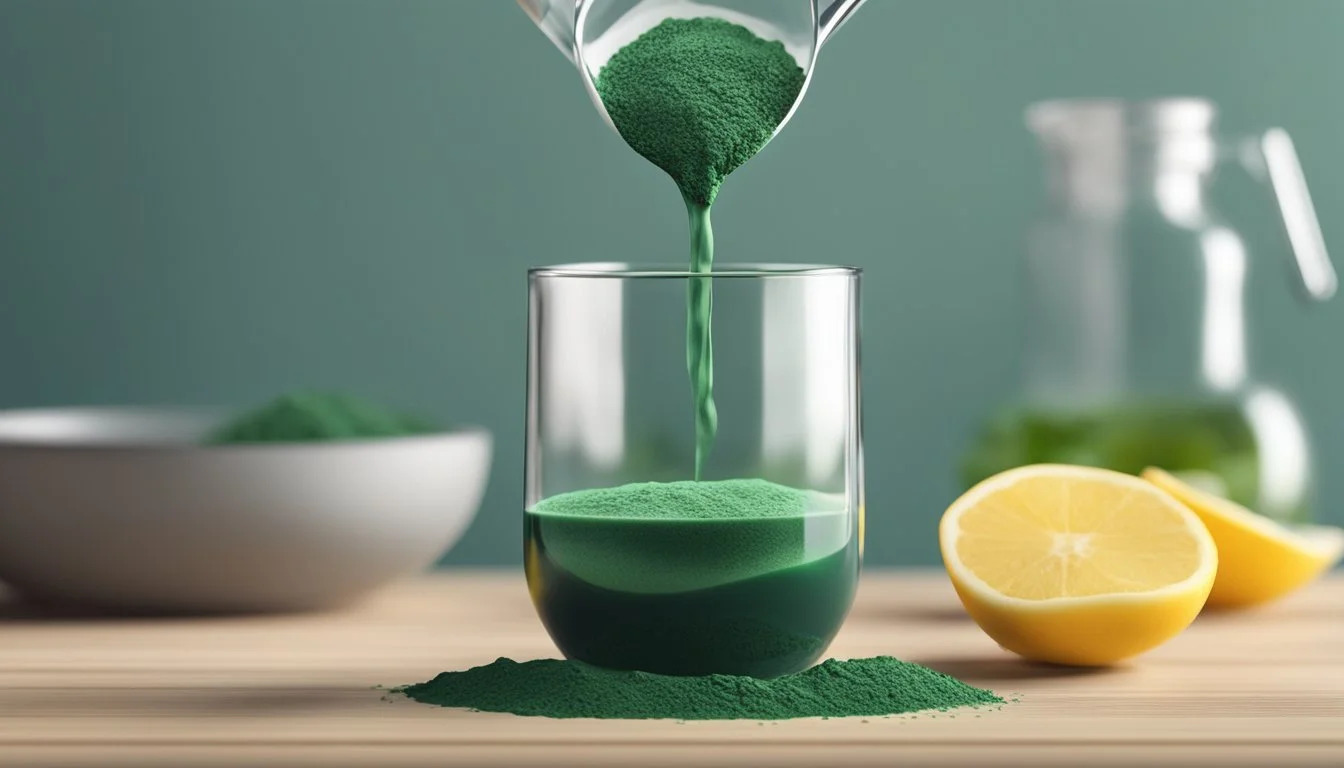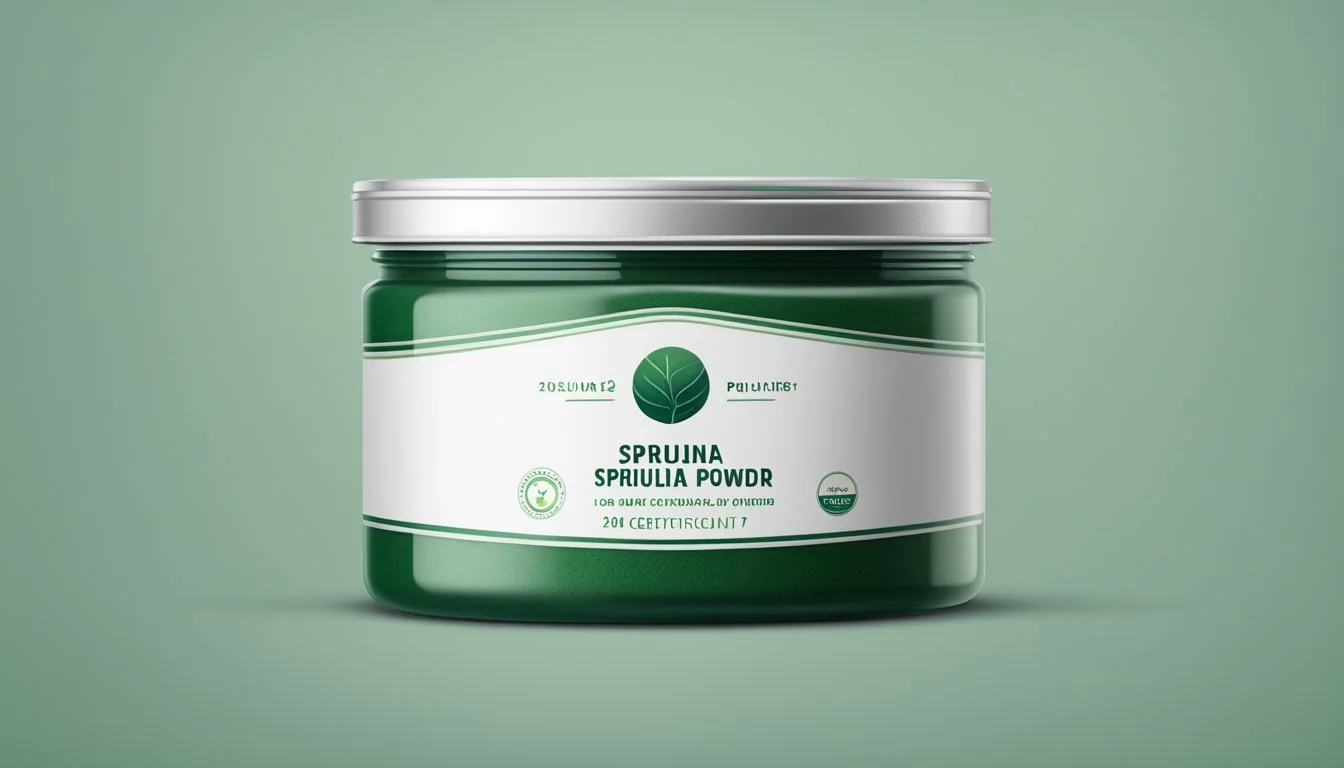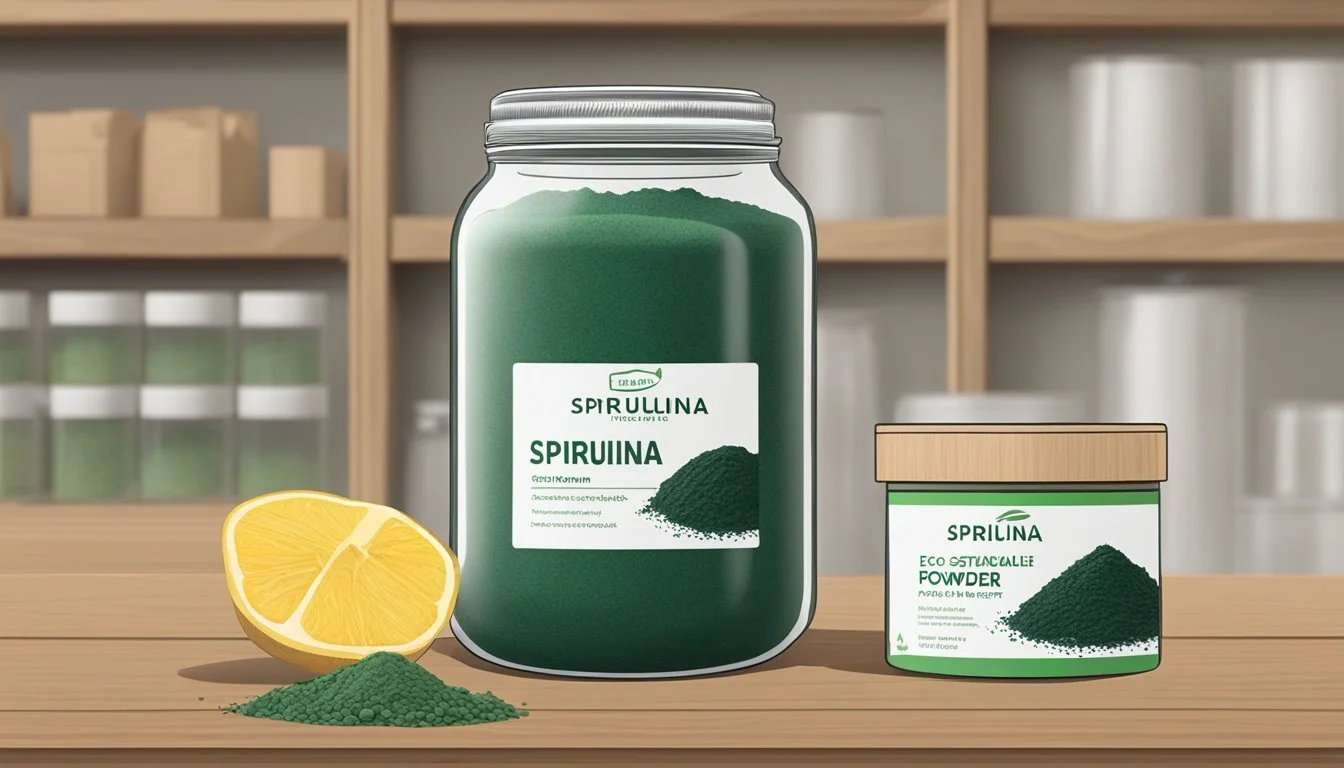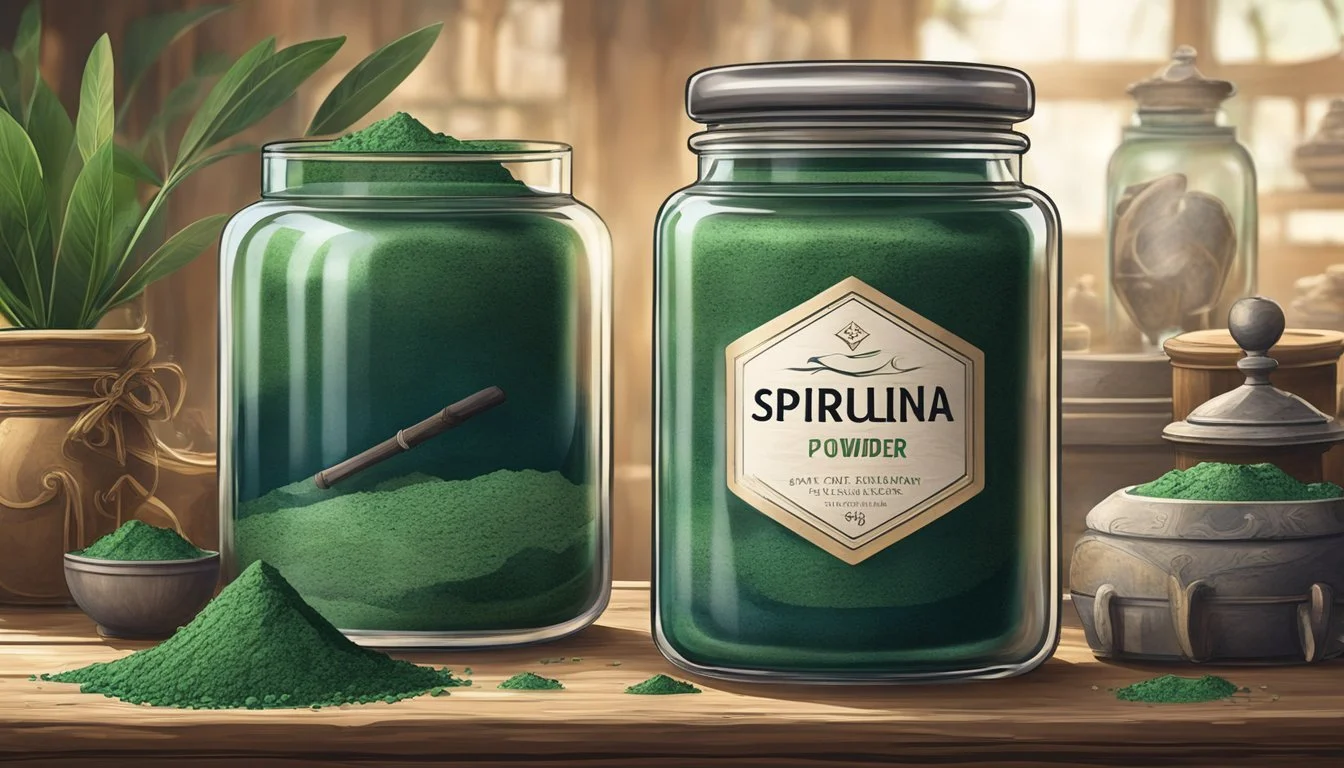How Long Does Spirulina Powder Last?
Shelf Life and Storage Tips
Spirulina, a type of blue-green algae, has gained significant popularity as a superfood due to its nutrient-rich profile, boasting protein, vitamins, and minerals. Available in various forms, spirulina powder (how long does spirulina powder last?) is commonly chosen for its ease of incorporation into diets, allowing individuals to sprinkle it onto smoothies, meals, or drinks. Given its concentrated nutrition, understanding how to maximize the shelf life of spirulina powder is valuable for maintaining its benefits.
Under proper storage conditions, spirulina powder can remain stable and potent for a considerable length of time. When stored in a cool, dry place, the powder can last for up to two years unopened. Once opened, ensuring the product is tightly sealed and kept away from moisture can help in preserving its quality. Refrigeration is recommended by some experts as a means to maintain the integrity of spirulina's amino acids and other fragile compounds, though it is typically not necessary if the spirulina will be consumed relatively quickly.
Understanding Spirulina Powder
In this section, we discuss spirulina, a nutrient-rich substance that has gained popularity as a dietary supplement for its high protein content and comprehensive nutritional profile.
What Is Spirulina?
Spirulina is a type of blue-green algae that grows in both fresh and salt water. It is recognized not only for its vibrant color but also as a sustainable, plant-based source of nutrients. Often used in supplements and health foods, spirulina contains various bioactive compounds that contribute to its health benefits.
Nutritional Profile
Spirulina is celebrated for its high protein content, comprising about 60-70% of its dry weight. It is a complete protein, meaning it contains all essential amino acids the body cannot produce. This alga is also rich in vitamins such as B12, which is particularly important for vegans who may not get enough from plant-only diets. Spirulina’s impressive array of minerals includes iron, magnesium, and calcium.
Nutrients Benefit Protein Supports muscle maintenance and repair Vitamins Vital for energy production and immunity Minerals Crucial for bone health and metabolism Amino Acids Essential for protein synthesis
Forms of Spirulina
Spirulina is available in several forms to suit different dietary preferences and uses:
Powder: Easily blends into smoothies and juices.
Tablets/Capsules: Convenient for daily supplementation.
Flakes: Can be sprinkled on food for a nutritional boost.
Each form maintains spirulina's nutritional value, making it a versatile addition to a diverse range of diets.
Proper Storage of Spirulina Powder
Maintaining the quality of spirulina powder hinges on two critical factors: selecting an appropriate storage container and controlling environmental conditions.
Choosing the Right Container
It is vital to store spirulina powder in an airtight container to prevent exposure to oxygen and moisture which can compromise its quality. Suitable options include:
Glass containers with airtight lids
Food-grade plastic containers with a sealable top
When choosing a container, consider the quantity of spirulina powder to ensure minimal air remains when sealed.
Ideal Environmental Conditions
The longevity and efficacy of spirulina powder are greatly affected by its storage environment. To preserve its freshness, it is recommended to store it in one of the following ways:
Cool and dry place: A pantry or cupboard away from direct sunlight or heat sources
Refrigerator: For extended storage times, particularly in warmer climates
Freezer: Optional for maximizing shelf life
To summarize, spirulina powder should be kept in a consistently cool, dry environment away from light and moisture, and it should always be in airtight containers to minimize oxygen exposure.
Shelf Life and Preservation
Spirulina powder's shelf life is influenced by storage methods, whether the package is opened or unopened, and exposure to environmental factors. Proper storage conditions can significantly extend the longevity and maintain the quality of spirulina.
Unopened vs Opened
Unopened: Spirulina powder, when unopened and stored in a cool, dry place, can last up to 2-3 years. Refrigeration is not necessary, but it can help preserve the amino acids within the algae.
Opened: Once opened, spirulina should be consumed more promptly, ideally within 6 months, to ensure its beneficial properties are retained. Air, moisture, and light exposure can expedite deterioration.
Extending Shelf Life Through Freezing
Freeze Spirulina Powder: Freezing spirulina can extend its shelf life to up to one year. It's important to keep the powder dry when freezing and only defrost the necessary amount, to prevent moisture-related quality issues.
Storage Containers: When freezing, using an airtight container or a sealed bag will limit exposure to air and moisture, reducing the risk of spoilage.
Signs of Deterioration
Rancidification: A rancid or off smell is indicative of oxidation and spoiling.
Taste: Any deviation from spirulina's characteristic taste, especially bitterness, may signal that the powder is past its prime.
Expiration Date: Always monitor the expiration date on the packaging, but remember that sensory changes can occur before the formal expiry, indicating a need for disposal.
Consuming Spirulina Powder
Spirulina powder is a versatile supplement that can be easily integrated into daily diets, enhancing nutrient intake with its rich composition, while also considering its potential effects on health.
Incorporation in Diet
Spirulina powder is commonly consumed as a dietary supplement due to its concentrated nutrient content. Individuals can incorporate it into their diet in several forms:
Spirulina Supplements: Available in pill or tablet form, these are a convenient option for people on the go.
Juice and Smoothies: Spirulina can be added to juices or smoothies for a nutrient boost.
Raw: It can be sprinkled over salads or into soups, although its strong flavor might be more palatable when blended with other ingredients.
When adding spirulina to food, it's important to start with small quantities due to its potent flavor and to ensure proper absorption of nutrients.
Health Benefits and Risks
Spirulina is noted for its health benefits, including:
Antioxidants: Contains antioxidants which help in protecting the body from oxidative damage.
Polyunsaturated Fats: Rich in essential fatty acids such as alpha-linolenic acid (ALA), gamma-linolenic acid (GLA), linoleic acid (LA), eicosapentaenoic acid (EPA), stearidonic acid (SDA), docosahexaenoic acid (DHA), and arachidonic acid (AA), spirulina supports various body functions.
However, consumption of spirulina may present side effects or interact with certain medications. Those taking blood thinners, pregnant or breastfeeding should consult a healthcare provider before using spirulina. Potential side effects could include allergic reactions or gastrointestinal discomfort, and its high protein content may affect individuals with certain kidney conditions. It's essential to be aware of the source of spirulina to avoid contaminants.
Quality and Certification
Ensuring the highest quality of spirulina powder is crucial for both safety and efficacy. Certification by reputable organizations and thorough contamination testing are key components of maintaining product standards.
Brands and NSF Certification
Certification from the National Sanitation Foundation (NSF) is one indication of a brand's commitment to quality. NSF certification implies that a product has been rigorously tested to comply with specific standards for safety, quality, and performance. Brands seeking NSF certification are subject to periodic unannounced inspections and product testing to ensure continuous compliance.
NSF Certified Brands:
Certification Status: Verified
Inspection Frequency: Periodic and unannounced
Detecting Contamination
Contaminants such as heavy metals can compromise spirulina's safety. Detection involves specific tests designed to identify and quantify these contaminants. Lead, for example, is a heavy metal of particular concern and its presence in spirulina must be strictly controlled. Third-party testing can provide an independent assessment of spirulina's purity.
Common Contaminants Tested:
Lead
Mercury
Arsenic
Cadmium
Reputable brands prioritize transparency in their contamination testing results, often making them available to consumers to build trust and ensure peace of mind.
FAQs
In this section, they address common queries regarding the shelf life and storage of spirulina powder, a popular vegan and gluten-free superfood.
Common Questions Addressed
How long does spirulina powder last?
Spirulina powder typically has an expiration date of about 2 years when unopened. Once opened, it should ideally be consumed within 3 to 6 months for maximum freshness.What is the proper way to store spirulina powder to maintain its shelf life?
They recommend storing spirulina in a cool, dry place away from sunlight. If one plans to consume it quickly, a dry room temperature environment suffice. Otherwise, refrigerating spirulina is advised to preserve its amino acids and nutrients.Is spirulina powder a vegan food?
Yes, spirulina powder is plant-based and considered a vegan food.Does spirulina powder contain gluten?
Spirulina powder is naturally gluten-free, making it suitable for those with gluten intolerance or celiac disease.Can you microwave spirulina powder?
It is not recommended to microwave spirulina powder as high temperatures might degrade its nutrients.Should spirulina powder be stored in transparent containers?
Storing spirulina in opaque containers is preferable to prevent light from diminishing its nutritional value.
Environmental and Ethical Considerations
In exploring the impact of spirulina powder on the environment and society, it is critical to assess both the sustainability of its production and how it supports broader green initiatives. Spirulina's role in sustainable practices and ethical consumption is increasingly relevant for consumers, including vegans and environmentally conscious individuals.
Sustainability of Spirulina Production
Spirulina, as a microalgae, has a relatively low carbon footprint compared to traditional protein sources. With the capacity for cultivation in varied climates, spirulina does not require arable land, thus minimizing deforestation and biodiversity loss. Renewable energy sources can be employed to power spirulina farms, further reducing their environmental impact. Additionally, spirulina absorbs carbon dioxide during its growth phase, contributing to carbon sequestration efforts.
Supporting Green Initiatives
The production and consumption of spirulina align with green living goals spearheaded by various environmental organizations. This alignment offers support for green initiatives that advocate for sustainable practices, as spirulina farming can serve as a model for creating a better future through innovative agriculture. Moreover, its versatility allows integration into products beyond food, like cosmetics, which can help drive the industry towards more sustainable solutions. Spirulina represents a tool for vegans and others looking to reduce their ecological impact, supporting sustainable practices and ethical consumerism.
Historical and Cultural Significance
Spirulina boasts a rich history dating back to ancient civilizations and has experienced a resurgence as a modern superfood due to its nutrient-dense profile. These historical roots inform its current place in food cultures around the globe.
Spirulina in Ancient Civilizations
Spirulina has played a significant role throughout history, particularly in Mesoamerica. The Aztecs, renowned for their advanced society, are one notable example. They utilized spirulina as a food source, harvested from Lake Texcoco and sold in cake form. Records indicate that this ancient usage interconnected with their sustainable agricultural practices, hinting at spirulina’s long-standing value as a nutrient supplier.
Modern Superfood Trend
In contemporary settings, spirulina has been labelled a "superfood." This is attributed to its high concentration of proteins, vitamins, and minerals. Recognizing its potential, health enthusiasts have integrated spirulina into daily dietary regimens, advocating its benefits. As a result, it is now widely available in various forms, including powders, tablets, and integrated into foods and beverages for enhanced nutrition.


